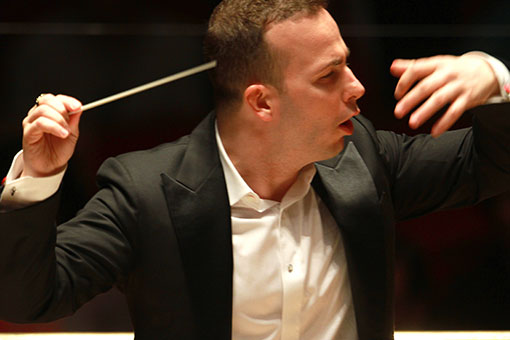
When Leonard Bernstein unveiled Mass, a “Theatere Piece for Singers, Players & Dancers” in 1971, many critics derided its amalgamation of the diverse forms of Broadway, gospel music, symphony, ballet and rock ‘n’ roll. Lenny already was known for juggling careers as conductor, TV host, serious composer and Broadway songwriter.
Harold Prince, who had co-produced Bernstein’s West Side Story, said to me: “People complain that Lenny can’t make up his mind about where his talents lie, and he should stick to one thing. Why should he? Let him do whatever he wants. He does so many things well.”
Mass was simultaneously Bernstein’s most private and most public work. It evokes his anguish over faith, society and government and was an intimate cry from Lenny’s heart, yet he presented it as a public event, with great hoopla at the opening of the Kennedy Center in the nation’s capital. Yes, he was conflicted—in this dichotomy, and in his faith and in other personal areas. Mass can be heard as an extension of his life-long struggle with his own father, and with all authority figures.
Jacqueline Kennedy commissioned Bernstein to wrote the piece in memory of the late President. Lenny’s daughter Nina says that he felt a tremendous burden of responsibility and went off alone for long periods to work on it. As deadline approached, he needed help to finish the English lyrics as he tried to relate the Mass to contemporary America. He turned to the 23-year-old Stephen Schwartz whose Godspell was playing off-Broadway. Schwartz molded the dramatic structure as well as writing words.
Bernstein’s duality, the conflict between his private and his public selves, is illustrated by a story Schwartz told me about their collaboration. They worked on Mass in California and took a day to go to Disneyland together with Bernstein wearing sunglasses and saying “I hope no one recognizes me.” Then the composer got upset when no one stared at him. There’s a passage in Mass written in twelve-tone structure. Bernstein fought against the insistence of academic musicians in the 1950s and 60s that twelve-tone "dodecaphony” was the required technique for any composer who wished to be accepted. Bernstein here used the mechanism to represent the dogmatic orthodoxy of the Church and the Establishment. Lenny exposed his innermost family relationship at the peak of his fame and notoriety. He had thrown a fund-raising party for the Black Panthers that was widely derided. An op-ed in the New York Times on January 16, 1970, said “the fund-raising soiree at the home of Leonard Bernstein represents the sort of elegant slumming that degrades patrons and patronized alike.” Tom Wolfe mocked the family’s “public espousal of street politics...so absurdly, diametrically, opposed to their islands of privilege.” The Bernsteins responded that the government used preventive political detention, and black activists had been held in jail for nine months without adequate resources to prepare for their defense. Lenny’s elder daughter Jamie wrote, “For a time my father's stature as a musician was overshadowed by his awful new role as object of trendy ridicule . . . Maybe a few more people now understand what an indomitable visionary he was.” Lenny called additional attention to his project by specifying huge forces—a large pit orchestra, symphonic winds and brass on stage, synthesizers, a rock band and a marching brass band, plus two choruses, a boy's choir, a very large cast and ballet dancers. In this production, Yannick Nézet-Séguin has added Mummers in their fancy regalia going up and down the aisles. It was as if Bernstein needed this enormous number of people to demonstrate his embrace of the community and the whole world. Much of the contemporary aura is now forgotten, so the piece can be assessed as music-theater rather than as agitprop. Bernstein wanted to show his opposition to the Vietnam War and also comment on the unrest in the Catholic Church of the time. Bernstein visited Father Philip Berrigan (who was in jail for leading anti-war demonstrations in Baltimore) and FBI director J. Edgar Hoover inaccurately told the Nixon Administration that Bernstein asked Berrigan to supply subversive text for the Mass. President Nixon refused to attend the opening. The Celebrant, a priestly figure, starts to lead a Mass and faces objections from his congregation and from street people. He represents the Establishment and the status quo. The climax is a veritable mad scene for the priest, smashing the vessels holding the sacraments and the Celebrant expressing doubts about his faith. The youngest member of the congregation, a choir boy, returns to supply a hopeful ending, reestablishing a sense of innocence and of community. Nézet-Séguin saw the composition as primarily a celebration of community and included disparate local groups to participate. Under his leadership, Mass emerges as a coherent piece in which the contrasting elements come together dramatically.
Kevin Vortmann is spectacular as the Celebrant, a role played in the past by Jubilant Sykes. Vortmann’s voice is warm and communicative throughout a wide range. All of the large cast are excellent, and the Philadelphia Orchestra proves even better than the original production’s orchestra which was led by Bernstein’s associate, Maurice Peress.
The experience is quite moving. My caveat is that the ending of Mass does not achieve the heart-rending musical apotheosis that Bernstein achieved with “Somewhere” in West Side Story and “Some Other Time” in On the Town and “Make Our Garden Grow” in Candide. Here, his compositional capability falls shy of his ambition.
One element is radically different from what I remember of 1971. Then, cast members came down the aisles at the end and directed audience members to clasp the hands of the people on either side and sway back and forth in a gesture of togetherness. And one element was eerily reminiscent. As we departed the theater Thursday night, police lined the streets because civil rights demonstrators were gathered across from City Hall and blocked traffic in some parts of downtown Philadelphia.
